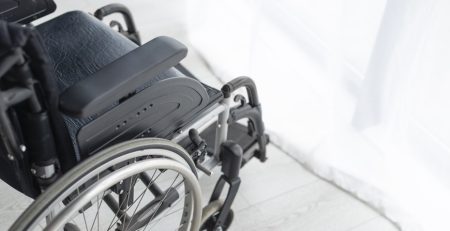- No products in the cart.
Which Is Best? Transit Or Self-Propelled Wheelchairs?
If you are thinking of using a manual wheelchair, you may be aware of two types of available chairs: Self-Propelled Wheelchairs and Transit Wheelchairs. However, are you aware of the differences and which one would be best suited to your needs? If the time has come when you need to buy a wheelchair, you may find it challenging to choose the model among so many types of chairs of this type that are on the market. Several factors will allow you to choose one type of wheelchair or another. In this article, we want to help you decide which is the best chair model to meet the person who will use it. You should be well informed to ensure that you are adapting the chair to the lifestyle of the person using it as well as their needs.
Self-Propelled Wheelchairs.
Self-propelled manual wheelchairs are those that can be pushed by the user or by a carer. Because these self-propelled wheelchairs are not electric vehicles but wheelchairs with a particular type of drive that can be operated by the driver, the driver remains physically fit as far as possible. With a self-propelled wheelchair, you can train the muscles while driving that would not be required in a purely electric wheelchair. However, a particular form of movement is essential to anyone, and often, a self-propelled wheelchair can lead to further issues with mobility because the task is being undertaken themselves.
These chairs often come in a large selection of models for all needs: steel, aluminum, positioning chairs, transport chairs, etc. Self-propelled wheelchairs have larger rear wheels. The side wheels incorporate rings so that the user can propel himself with his hands and also include handles on the back so that another person can push the chair. This type of wheelchair is recommended for people who do not have problems using the arms’ strength to move since they are heavier and wider chairs. For outdoor use, it is recommended that your rear wheels have a large diameter. This will allow you to adapt to different types of terrain and go up and down small curbs. You can adapt the chair to your needs, and could opt for a chair that is best suited: kids wheelchair, power assisted wheelchair, or a walker wheelchair. There are plenty of options on the market.
A self-propelled wheelchair’s benefits are that a manual wheelchair allows the user to move around quickly and doesn’t have to rely on someone to push them (although this is an option, of course). It allows them to maneuver the wheelchair and continue to be independent regardless of a caregiver.
Types of models you may find.
Self-propelled wheelchairs are offered in different model variants. On the one hand, some chairs are operated manually using a hand lever with a gear. Furthermore, wheelchairs are offered that can be moved using handrails on the tires. For both model variants, the driver should have sufficient arm strength so that the wheelchair can be moved forward. This can lead to fatigue states, especially on more extended tours and journeys, if there is insufficient physical strength.
For this reason, models are also offered in which the wheelchair is operated using the feet so that the driver must have sufficient muscle strength in the legs. To be able to move about with the wheelchair, the weight of the wheelchair should be very low. Weight between 10 and 15 kg is optimal. Because the lighter the wheelchair, the less weight the driver ultimately has to move.
Conclusion: The self-propelled wheelchair – keep your mobility and stay fit.
Seniors like to opt for a self-propelled wheelchair when buying a wheelchair. This model differs from an electric wheelchair, which does not require any movement. In contrast, the models in which the driver has to participate in the movement actively are self-driving. For this purpose, wheelchair models are available that can be moved with the hands and arms. Those who still have sufficient strength can use these wheelchairs to maintain their fitness and finally make themselves more mobile. After all, the wheelchair offers a larger radius of action. This promotes independence and also elevated well-being. If the arms’ muscle strength is not sufficient for locomotion, there are wheelchair models that can be operated with the feet. Often the muscle strength in the legs is higher, so these models are also preferred. Electric wheelchairs are only recommended for people who no longer have sufficient muscle strength to move the wheelchair forward.
When buying, you should pay attention to the features of the wheelchair. The weight of the wheelchair itself plays a significant role here. The less weight has to be moved, the less force is required. This can already be noticeable on medium-long stretches. Furthermore, the selected self-propelled wheelchair should also have adjustment options so that sitting is as comfortable as possible. The correct seat in the wheelchair is essential so that the chair can be steered and driven correctly. Safety features such as drum brakes and an anti-tip device should also be considered when buying. Also, there should be a storage facility so that essential utensils can be taken with you.
Transit Wheelchairs.
These types of chairs are designed for people who cannot handle the chair by themselves. These chairs have handles so that the caregiver is in charge of handling the chair as well as smaller rear wheels, which makes it easier to maneuver. It would be challenging for someone in this type of chair to operate it themselves. It also means that the caregiver can quickly and easily enable the wheelchair user to move locations and adapt where necessary. It doesn’t rely on the person in the wheelchair to operate it, which could be both beneficial or disadvantageous. If the person is too disabled to operate the chair themselves, then in this instance, it would be best for them. If they have limited mobility but want to remain independent, then perhaps a transit wheelchair would not be best, as it may limit what they can and can’t do.
Often they are lightweight, and some may fold away. A folding wheelchair is beneficial and can be placed in a car or in a cupboard/closet in the house when not in use. You will also find electric transit wheelchairs that assist with the pushing of the chair.
Types and usages.
As we know, transit chairs generally have small rear wheels with no edges to push, and you will find that they are accommodating in terms of travel. You will see these wheelchairs in buildings such as airports and hospitals where porters act as helpers.
Most wheelchairs have two handles at the top rear of the seat to allow manual propulsion by a second person pushing. There are also chairs with smaller rear wheels, designed for all those who will be assisted by another so that such large rear wheels are not necessary. The diameters of these chairs range from 24 ″ in diameter to 12 ″ and can be solid or pneumatic. Other wheelchair models are often variations on this basic design but can be highly customized for the user’s needs. Such particular requirements can include seat dimensions, height, seat angle (tilting chairs), front-wheel stabilizers, adjustable backs, and controls; in short, almost a custom wheelchair can be made.
The manual wheelchairs are usually of two types, rigid or folding. Rigid chairs tend to be increasingly preferred by active users, as the joints have been permanently welded, and there are far fewer moving parts. This reduces the energy required to push the chair by eliminating many points where the chair could flex as you go.
Conclusion: The Transit Wheelchair – helpful for those with limited mobility and unable to operate the chair themselves.
The transit wheelchair, like any wheelchair, can be power-assisted. This results in taking advantage of the comfort, small size, and lightweight of a manual chair while providing motorized assistance for uneven terrain and steep slopes, which would otherwise be difficult or impossible to navigate, especially by those with the superior function of the wheelchair. The transit wheelchair is easy to maneuver, and the person using the wheelchair doesn’t have to do any physical movement. If the person is older or has limited use of their limbs, this is a good option. If they cannot manage any type of operation or are not strong enough to move the wheels, a transit wheelchair is best. In this case, an electric chair could be of use. An electric chair is operated by the person using it and can help those who want to keep their independence. However, if the person is severely disabled, they would not operate an electric chair either.
While both wheelchairs have benefits, there are decisions to be made before committing to making a decision. It is always favourable to talk to your general practitioner and see what is best for your needs. However, it is good to be aware of the types of chairs available and likely to be the best investment for your personal needs. For more information on making the right decision about your wheelchair, please refer to our website at https://mobilitycaring.com.au/















